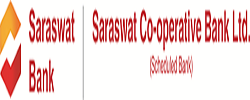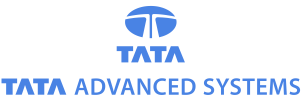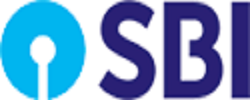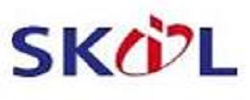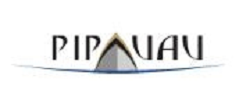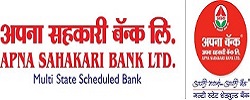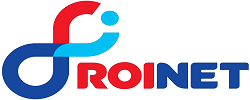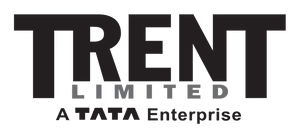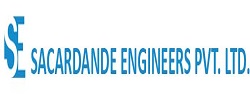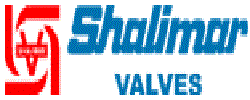A communication network, which spans a small area, such as a building or an office. There is several network topologies design for LANs, such as Ethernet or Token Ring. LAN is usually faster than WAN and has lower propagation delay.
An Internet or network, which is spread across a wide geographic area. Usually uses transmit ion architecture and devices from common carriers.
TCP/IP is a standard, routable enterprise networking protocol that is one of the most complete and accepted protocols available. All modem network operating systems offer
TCP/IP support, and most large networks rely on TCP / IP for much of their network traffic. The Internet Protocol (IP) is a routable protocol responsible for IP addressing and the fragmentation and reassembly of packets.
Each TCP/IP host is identified by a logical IP address. A unique IP address is required for each host and network component that communicates using TCP/IP. Each IP address includes a network ID and a host ID. The Network ID (also known as a network address) identifies the systems that are located on the same physical network bound by IP routers.
All systems on the same physical network must have the same network ID. The network ID must be unique to the network.
The Host ID (also known as a host address) identifies a workstation, server, router, or other TCP/IP hosts within a network. The address for each host must be unique to the network ID.
Address Classes
The Internet community originally defined five address classes to accommodate networks of varying sizes. Microsoft™ TCP/IP supports class A, B, and C addresses assigned to hosts. The class of address defines which bits are used for the network
ID and which bits are used for the host ID. It also defines the possible number of networks and the number of hosts per network.
Class A
Class A addresses are assigned to networks with a very large number of hosts. The high-order bit in a class A address is always set to zero. The next seven bits (completing the first octet) complete the network ID. The remaining 24 bits (the last three octets) represent the host ID. This allows for 126 networks and 16,777,214 hosts per network.
Class B
Class B addresses are assigned to medium-sized to large-sized networks. The two high-order bits in a class B address are always set to binary 1 0. The next 14 bits (completing the first two octets) complete the network ID. The remaining 16 bits (last two octets) represent the host ID. This allows for 16,384 networks and 65,534 hosts per network.
Class C
Class C addresses are used for small networks. The three high-order bits in a class C address are always set to binary 1 1 0. The next 21 bits (completing the first three octets) complete the network ID. The remaining 8 bits (last octet) represent the host ID. This allows for 2,097,152 networks and 254 hosts per network.
Class D
Class D addresses are reserved for IP multicast addresses. The four high-order bits in a class D address are always set to binary 1 1 1 0. The remaining bits are for the address that interested hosts will recognize. Microsoft™ supports class D addresses for applications to multicast data to multicast-capable hosts on an Internet work.
Ping
This utility is used for verifying configurations and testing connectivity.
Ifconfig/Ipconfig
The utility displays the current TCP/IP configuration
Netstat
The utility displays TCP/IP session information
Route
The utility displays or modifies the local routing table
ARP
The utility displays a cache of locally resolved IP addresses to MAC (Media Access Control)Addresses
The Internet Protocol Suite comprises different protocols working at different layers.
These include:
PPP (Point-to-Point Protocol)A protocol for creating a TCP/IP connection over both synchronous and asynchronous systems. PPP provides connections for host to network or between two routers. It also has a security mechanism. PPP is well known as a protocol for connections over regular telephone lines using modems on both ends. This protocol is widely used for connecting personal computers to the Internet.
A router is actually a special software or hardware device, which is dedicated to the task of interconnecting networks. It moves information from its source to its destination regardless of the middleware.
A common problem in the networking world is that the strength of the electrical signals weakens over distances or due to other interference. Electrical signals traveling through wires (such as copper wires used in most networks), weaken due to the wire's electrical resistance. This effect limits the lengths of the cable that can be used. A repeater will overcome this limit, when there is a need to connect two computers at a larger distance. A repeater is connected to two cable segments. Any electrical signal reaching the repeater from one segment will be amplified and re-transmitted to the other segment.
A modem is a device that converts digital data originating from a terminal or computer, to analog signals used by voice communication networks such as the telephone system. At one end, modems convert the digital pulses to audible tones and convert audio tones back to digital pulses at the other.
Firewalls are systems that establish access control policies among networks. They can block information from entering a network or from getting out of that network; they can permit different users to perform different kinds of operations, according to the user's authorizations.
There are several kinds of firewall implementations, which enable each company to decide what exactly are the characteristics of the security policy that would best fit its special demands. There are two general types of firewalls: Packet Level Firewalls, which examine packets and decide according to filtering rules whether to pass them to the network and Application Level Firewalls, which monitor specific applications protocols.
Internet is nothing else but a global network, which enables smaller networks across the world to connect to each other. These networks have the capability of sharing files, sending e-mails to each other or surfing various Web sites available. Nobody owns or controls the Internet, it is like a maze of endless information, in which one can only go deeper and deeper and learn more and more.
All the users on the Internet connect to each other through what is basically known as Internet Service Provider (ISPs). ISPs provide connectivity at a local node/region and enable the users in that region to connect globally. Most users normally connect to their ISPs through dial-up lines. You are given a username and a password through which you connect to the Internet. Other modes of communication that are possible include
The Internet basically consists of many Web sites. These Web sites are normally created using HTML (Hyper Text Markup Language). HTML defines the structure and layout of a Web document by using a variety of tags and attributes. Using a protocol known as HTTP (hyper text transfer protocol) you can view these Web sites. There are several applications called Web browsers that make it easy to access the World Wide Web; Two of the most popular being Netscape Navigator™ and Microsoft's Internet Explorer™
Apart from browsing Web sites, you can also send email (electronic mail) to your friends, colleagues, family, etc. using the Internet. These messages are plain text that gets transferred over networks using different protocols. You use an e-mail client such as Outlook Express™ or Eudora™ to compose your mail. Each mail has a 'To' field, which is the address of the recipient. Then using SMTP (simple mail transfer protocol), when you are connected to the Internet, the mail gets sent to the server of the recipient. The recipient then downloads the mail using POP (post office protocol), to his e-mail client.
Apart from POP, you can also use IMAP (Internet Message Access Protocol) to collect your mail. The difference in IMAP is that certain features such as searching e-mail for keywords while on the mail server or choosing the messages to download are supported.
A type of communication in which a dedicated channel (or circuit) is established for the duration of a transmission. The most ubiquitous circuit-switching network is the telephone system, which links together wire segments to create a single unbroken line for each telephone call.
A method by which you connect to the Internet through the local telephone line using a modem. You dial to your Internet Service Provider, who in turn connects you to the Internet.
Refers to a method for ensuring that data stored in a computer cannot be read or compromised. Data encryption is the translation of data into a secret code that is unintelligible without a deciphering mechanism. Encryption is the most effective way to achieve data security. To read an encrypted file, you must have access to a secret key or password that enables you to encrypt it. Unencrypted data is called plain text; encrypted data is referred to as cipher text.
A machine or system that links two different types of networks. Gateways between e-mail systems, for example, allow users on different email systems to exchange messages. It can also refer to the network equipment through which you connect to the outside world.
Refers to a common connection point for device in a network. Hubs are commonly used to connect segments of a LAN. A hub contains multiple parts. When a packet arrives at one port, it is copied to the other parts so that all segments of the LAN can see all packets.
This is a technique by which you can try and again unauthorized access to a machine. Basically, a hacker tries to connect to a computer using an address, which the computer recognizes as coming from a trusted source.
Abbreviation of Integrated Services Digital Network, it refers to an international communications standard for sending voice, video, and data over digital telephone lines or normal telephone wires. ISDN supports data transfer rates of 64 Kbps (64,000 bits per second). Most ISDN lines offered by telephone companies give you two lines at once, called B channels. You must use one line for voice and the other for data, or you can use both lines for data to give you data rates of 128 Kbps, two times the data rate provided by the faster modems.
A connection made in which you are directly connected to your Internet Service Provider by cable. Leased lines provide continuous Internet connectivity, and speeds can range from 64 Kbps to as high as 2 Mbps.
Refers to protocols in which messages are divided into packets before they are sent. Each packet is then transmitted individually and can even follow different routes to its destination. Once all the packets forming a message arrive at the destination, they are recompiled into the original message. Ports: In networks using TCP/IP and UDP protocols, parts refer to the endpoint to a logical connection. The port number identifies what type of port it is. For example, port 80 is normally used for HTTP traffic (browsing), while port 21 is for FTP (file transfers).
An agreed-upon format for transmitting data between two devices. The protocol determines the type of error checking to be used, data compression method, if any and the method by which the sending device will indicate that it has finished sending a message
Refers to a piece of software or hardware that sits between the modem or Internet connection gateway and the client. All clients have to pass through the proxy server to access the Internet. Therefore, just using one Internet connection you can give Internet access to everyone in your organization. Also, by caching pages, browsing can be made faster.
An encryption method, which uses two keys '.' A public key known to everyone and a private or secret key known only to the recipient of the message. A message is sent using a public key and is decrypted using the private key.
A device that connects number of LANs together. Routers use headers and a forwarding table to determine where packets go, and they use different protocols to communicate with each other and configure the best route between any two hosts.
In networks, a device that filters and forwards packets between LAN segments. Switches can support any packet protocol. LANs that use switches to join segments are called switched LANs or, in the case of Ethernet networks, switched Ethernet LANs.

